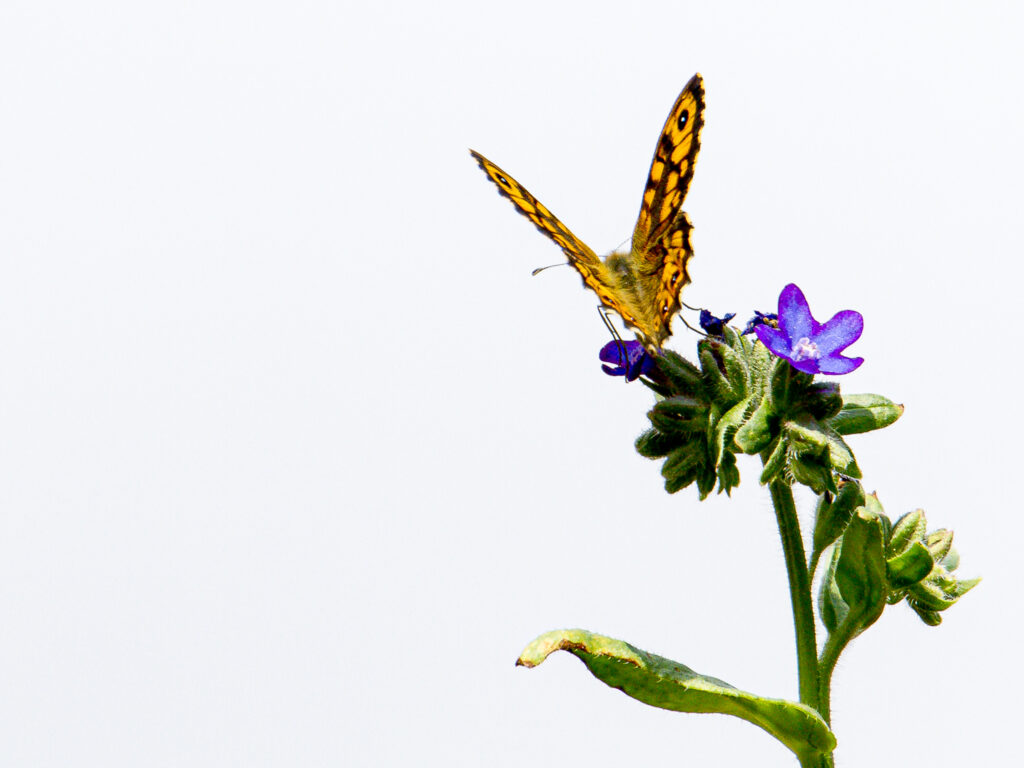Life history evolution in a range-expanding butterfly

Climate change pushes species polewards. But although warmer climates make new areas available, unchanging environmental factors may slow expansions down. In my PhD project, I study whether the wall brown butterfly (Lasiommata megera) adapts to new conditions during its climate change-facilitated range expansion in Scandinavia. I focus on whether these adaptations could facilitate further range expansion.
Insects often use daylength as a calendar for timing their life cycles – days shorten before winter and lengthen before summer. And because daylengths also differ among latitudes, poleward-expanding populations need to adapt to new daylength regimes. Using laboratory experiments, my co-authors and I showed that northern range margin populations are locally adapted to the daylengths of their current latitudes. This signals rapid evolution in the 20 years during which the species has established in the north (see published article).
In another experiment, combined with several physiological measurements, I tested whether populations studied in the above experiment have adapted to winter conditions of the southern and northern parts of the species’ Swedish range. There was no evidence for local adaptation in the studied traits, but very high mortality in our coldest winter treatment. This indicates that cold winters may set the wall brown’s northern range limit. This work is also published.

In on-going work, I’m bringing ideas from my laboratory studies into more realistic field settings and use whole-genome sequencing data to investigate the population genetics behind the range expansion and the associated local adaptation. In the field experiment, we used cages with potted food plants at three field sites in Sweden (southern part of the range, northern range margin, and north of the current range). We tested how caterpillars from different populations differ in the timing of hibernation and winter survival as well as whether cold winters or short growth seasons set the range limit.
It seems that although seasonal timing traits have evolved rapidly, traits related to winter survival have not, despite being crucial for survival. Evolution during range shifts may be swift, yet a continued range expansion may require evolution of several different traits, which may not all evolve as easily.
Core collaborators: Karl Gotthard (main PhD supervisor), Philipp Lehmann (supervisor), Christopher W. Wheat (supervisor), and Matthew Nielsen.
Aggressivity and dispersal in a supercolonial ant

For my master’s thesis, I studied a 1,300 nest supercolony of the ant Formica pressilabris. A supercolony is a colony of numerous nests and often many queens in each. We found more aggressivity among nests within the supercolony than would be expected in a true colony. Thus, the nature of supercoloniality in this species is unclear – although the large and dense nest aggregation superficially looks like one supercolony, it may consist of sveral smaller supercolonies. Or, if there are no borders between colonies, the nest aggregation defies usual definitions of supercoloniality.
DNA microsatellite data indicated low dispersal; the supercolony has probably grown through budding from existing nests. Lack of longer-distance dispersal may be an evolutionary dead end, as it leads to competition between relatives (daughter queens stay and share the nest with their mothers instead of flying away) and the supercolony could become an isolated population. However, we found only limited support for genetic isolation from other subpopulations on an approximately one-kilometer radius. This work if finished (see published paper with my supervisors Heikki Helanterä, Perttu Seppä, and Sanja Hakala), but I hope I’ll have the opportunity to do more with the study system someday.
